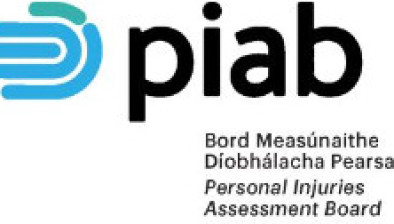High Court: Applicant fails in challenge to PIAB assessment based on inadequate reasoning for €11,000 award

The High Court has dismissed a challenge to an award by the Personal Injuries Assessment Board (PIAB) where the applicant claimed that inadequate reasons were provided for its decision. The applicant had an application for compensation assessed at €11,000 and it was claimed that PIAB did not properly outline how the Personal Injuries Guidelines were applied to her case.

About this case:
- Citation:[2022] IEHC 370
- Judgment:
- Court:High Court
- Judge:Ms Justice Miriam O'Regan
Delivering judgment in the case, Ms Justice Miriam O’Regan held that an objective observer would be aware of the reasons for the assessment. The court rejected the applicant’s claim that she did not know how PIAB reached the decision, noting that a dominant injury was identified by PIAB and that there was no statutory obligation on PIAB to provide detailed reasons for assessment.
Background
The applicant claimed to have suffered personal injuries at work in December 2018. The applicant suffered soft tissue injuries to her left shoulder, lower back and right thigh. An application for assessment was made to PIAB in February 2020. The applicant provided her own medical reports and was inspected by two doctors commissioned by PIAB.
PIAB completed the assessment in June 2021 and determined that the applicant’s injuries were worth €11,000 in general damages. In a letter to the applicant, PIAB outlined that it assessed the applicant’s dominant injury as being her lower back injury and determined that the injury was categorised as minor. It was also determined that the applicant would substantially recover in one to two years.
The applicant took issue with the letter, arguing that it contained generic paragraphs on the methods used by the assessors and the application of the Guidelines. As such, it was argued that PIAB did not give reasons for how and why the dominant injury was assessed or why it was categorised as minor. Further, it was submitted that the applicant did not know how the other injuries were taken into account or whether any uplift was afforded due to the multiplicity of injuries.
Accordingly, the applicant claimed that the reasons for the assessment were inadequate. The applicant relied on section 20 of the Personal Injuries Assessment Board Act 2003, which provided that an assessor must “have regard” to the Guidelines when making an assessment. It was submitted that section 20 required PIAB to provide reasons in writing as to how the Guidelines were applied to a case.
The applicant claimed that she was significantly prejudiced by the inadequate reasoning based on section 51A of the 2003 Act, which provided that a claimant who rejected an assessment may be liable for a defendant’s costs if they failed to achieve a greater award in litigation. It was argued that the failure to give adequate reasons meant that the applicant’s solicitor could not advise her on whether she should accept the assessment or issue legal proceedings. Further, it was said that section 51A had a “chilling effect” on the constitutional right of access to the courts.
High Court
The court began by outlining the general rationale for and application of the Personal Injuries Guidelines to court proceedings. Under section 20 of the 2003 Act, PIAB was similarly required to have regard to the Guidelines and state reasons if it departs from the Guidelines in its assessment.
The court also considered the medical evidence which was before PIAB. It was noted that the applicant’s medical report indicated that there was no pre-existing condition in her back, but pain was ongoing. The first independent medical report from November 2020 identified soft tissue injuries to the lower back, left shoulder and right thigh. The thigh injury has resolved within two weeks but the lower back and shoulder remained occasionally painful.
A further report from the second independent practitioner noted an asymptomatic pre-existing back injury. The applicant was found to have ongoing pain and stiffness in her back with mild discomfort in her left shoulder. A substantial recovery was expected within three years.
The court then considered the case law relating to the duty to give reasons. It was held that reasons were to be assessed by reference to what a reasonable person with full knowledge would conclude by reading the relevant text (EMI Records (Ireland) Ltd. v. Data Protection Commissioner [2012] IEHC 264). Further, it was held that the reasoning “must enable the reader to understand why the matter was decided as it was and what conclusions were reached on the ‘principal important issues’ (Deerland Construction v. Aquaculture Licenses Appeals Board [2008] IEHC 289).
Mr Justice O’Regan noted that the nature of decisions and processes could vary widely and therefore it was difficult to be specific on the manner in which the duty to give reasons may manifest (Connelly v. An Bord Pleanála [2018] IESC 31). The court also referred to NECI v. The Labour Court [2021] IESC 36 which provided a summary of the applicable principles. Part of the test included whether the parties had enough information to seek judicial review and whether the reasons would allow a court to engage in an appeal or review.
Applying the law to the case, the court was satisfied that PIAB did not provide reasons for departing form the Guidelines in the letter, which meant that the Guidelines must have been applied in the assessment. The only issue in the assessment was the level of quantum of the injuries and the applicant had all documents available to her, the court said.
The court rejected that section 51A provided a chilling effect on access to the court. The possibility of costs being awarded against a plaintiff was not novel or exceptional, with Calderbank letters or lodgements being a usual feature of litigation.
Further, it was clear that a dominant injury was identified by PIAB and there was “ample medical evidence” to come to that conclusion. Accordingly, the court held that an objective observer having all necessary detail would know that the reference to “dominant injury” meant that there was more than one injury assessed. An objective observer would also be able to read the Guidelines to assess the categorisation of the injury as “minor”.
The court emphasised that no findings of facts were made by PIAB and the process was not binding on the applicant or the employer. As such, the court was satisfied that adequate reasons had been provided for the PIAB assessment.
Conclusion
The court refused to grant an order of certiorari for the PIAB decision on the basis that PIAB had complied with its obligation to give reasons to the applicant. There was no statutory requirement for PIAB to give reasons for a decision. Taken together, the PIAB letter and the Guidelines were sufficient to fulfil the obligation to give reasons for the assessment.
Wolfe v. Personal Injuries Assessment Board [2022] IEHC 370









